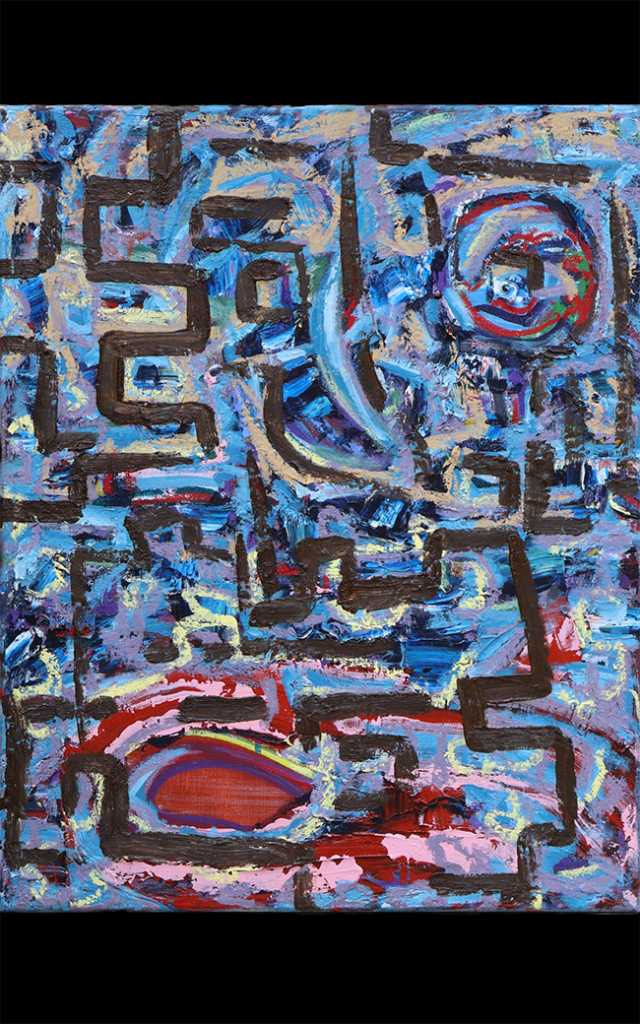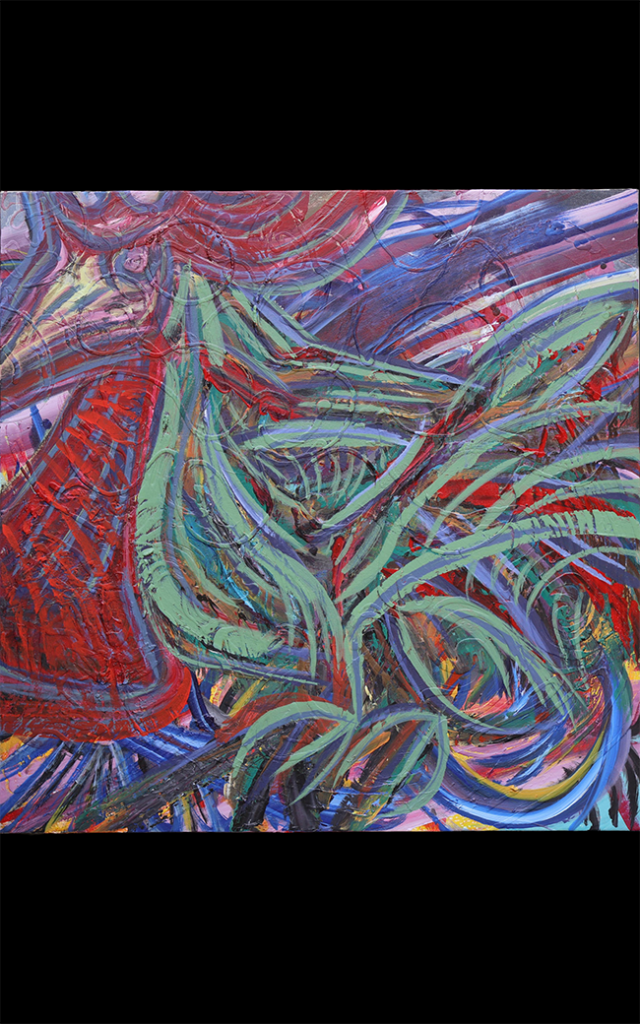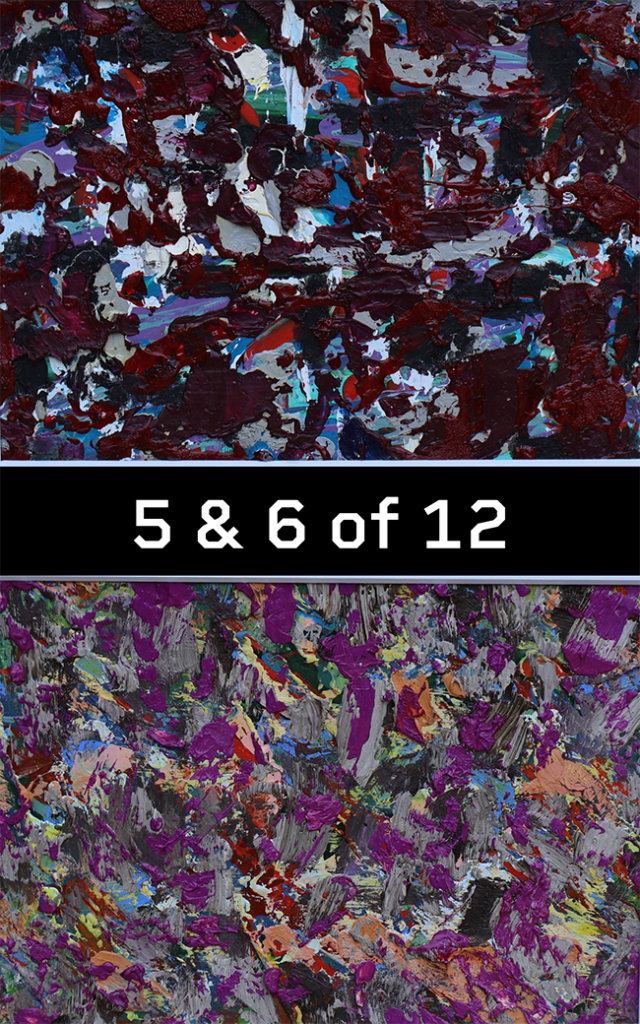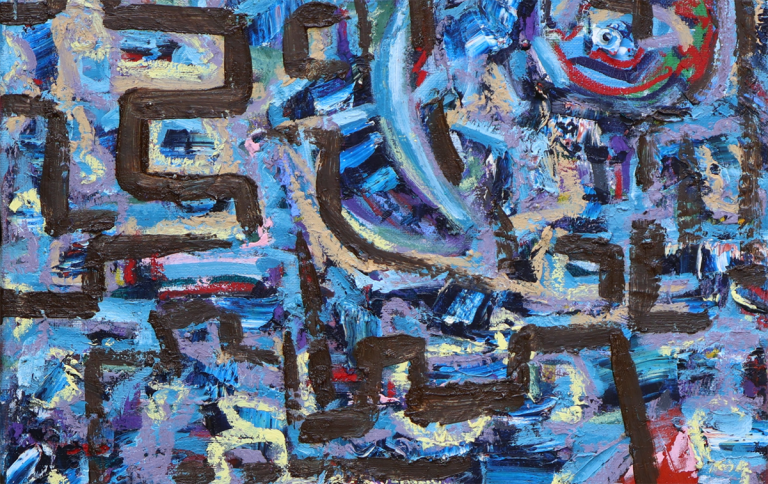Derrick Bullard picked up a paintbrush as a teenager and didn’t put it down. Back then, he was navigating life with undiagnosed ADD and trying to find something that could hold his attention. School didn’t. Neither did most hobbies. But painting did. It was the one thing that asked nothing more than time, focus, and a willingness to show up. That was enough to keep him going.
He didn’t follow a traditional path. No art degree. No critics pushing him forward. No gallery telling him what to do next. Bullard carved out his own route—quiet, steady, and deeply personal. More than two decades in, he’s created hundreds of works, maybe more than a thousand, and he’s not finished. He’s aiming for 2,500. There’s no grand concept behind it—just the rhythm of a man making something real, one painting after another.
Bullard’s Work: A Closer Look
What is the difference between me and you?

This piece is about pause. About stopping long enough to ask a simple, almost uncomfortable question: what makes us different? And maybe more importantly—what doesn’t?
There’s no drama in this canvas. No attempt to impress. It’s stripped down, reflective. You get the feeling Bullard wasn’t trying to make something perfect—he was trying to tell the truth. In a way, it’s a self-portrait, though not in the traditional sense. It’s about what happens when you sit with yourself long enough for the noise to fade and something honest to show up.
The painting isn’t polished. It doesn’t pretend. It just is. The kind of work that’s easier to feel than explain. The fact that it’s debuting in Venice makes sense. Not because of prestige, but because the work has weight. Not in size—but in soul.
Rooster

There’s a story behind this one, and it’s not hidden. Rooster was painted on a canvas someone else left behind. Bullard found it, reworked it, gave it a second life—just like he was doing for himself at the time. He started the piece in New Orleans, finished it in Atlanta, in the middle of a stretch where survival meant being resourceful, quick, and present.
He bartered. He traded. He lived day to day. And this painting came through that—through the grit, the hustle, the rawness of living on the edge. That rooster became a kind of personal symbol. A way of saying, “I made it through another day.” The painting doesn’t spell it out. But once you know the backstory, it’s all there in the layers.
Simple subject. Complex life behind it. That’s the tension that holds this piece together.
12 Postcards

These are small works, but don’t let the size fool you. They took years. Not because of difficulty, but because Bullard approached them with care. Between larger projects, he would return to these tiny canvases—twelve in total—each one a small experiment in patience and restraint.
The goal was to see if his process, which usually plays out on bigger surfaces, could still breathe inside something that fits in your hand. Turns out, it can. These paintings aren’t sketches or studies—they’re finished thoughts. Concentrated versions of his larger works. Each one sharp, deliberate, complete.
Seven of the twelve are headed to Venice. They’re proof that you don’t need a massive canvas to carry meaning. Sometimes a postcard is enough to hold a whole world.
Bullard’s work isn’t trying to be part of a movement. It’s not chasing gallery trends. It doesn’t care about being polished. What it offers instead is presence—honest, unfiltered, and lived-in. You can see the years in his work. You can see the decisions, the shifts, the risks.
It’s not art made for attention. It’s art made to survive. To stay grounded. To keep going. And that’s what makes it resonate. There’s no curtain between the artist and the work. He paints how he lives—one day at a time, one brushstroke at a time.

